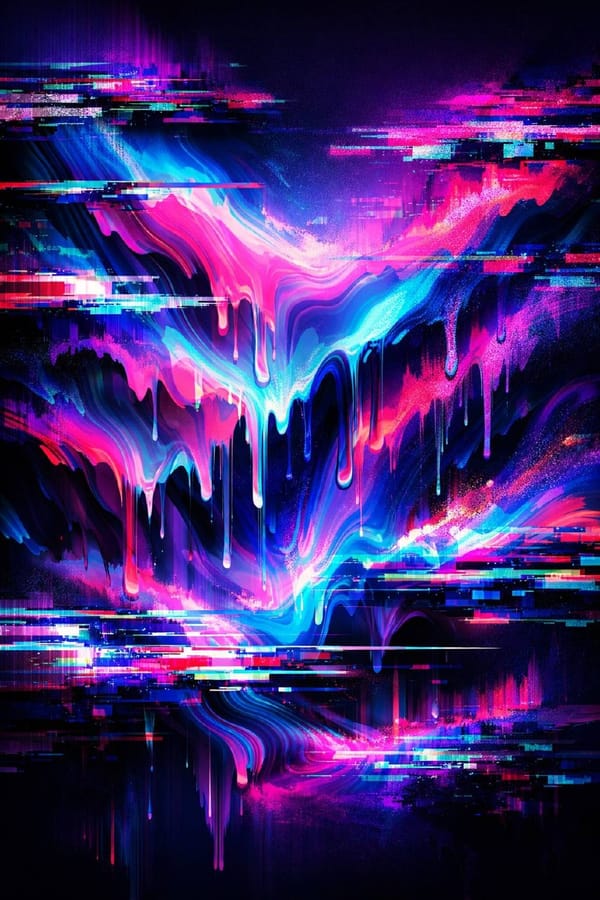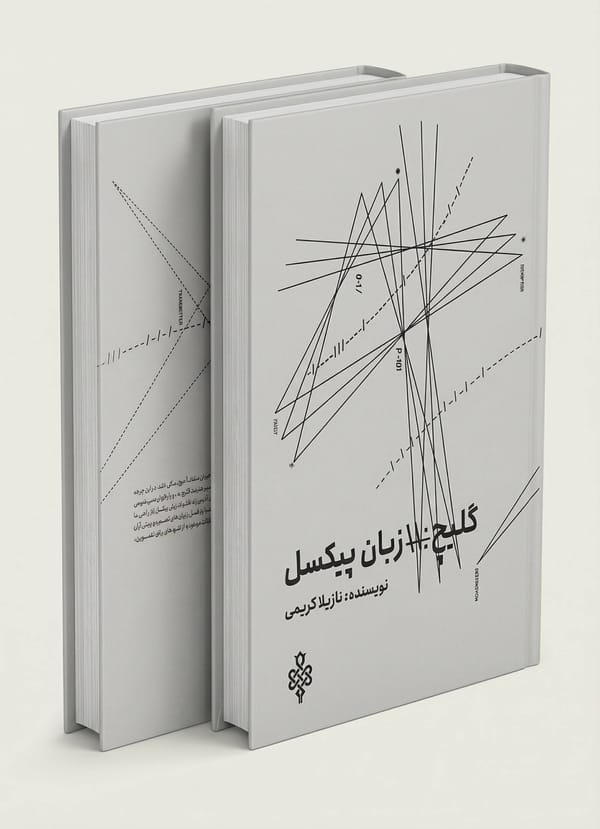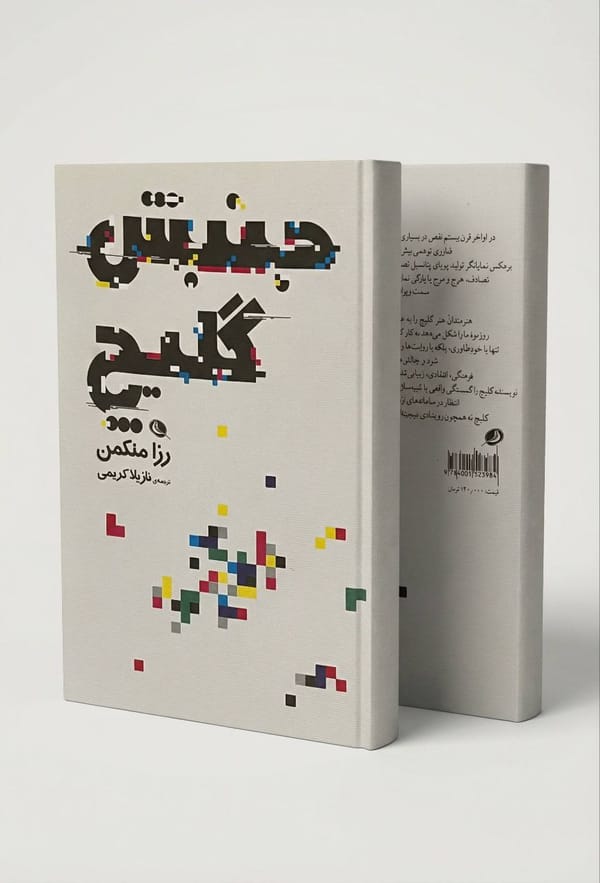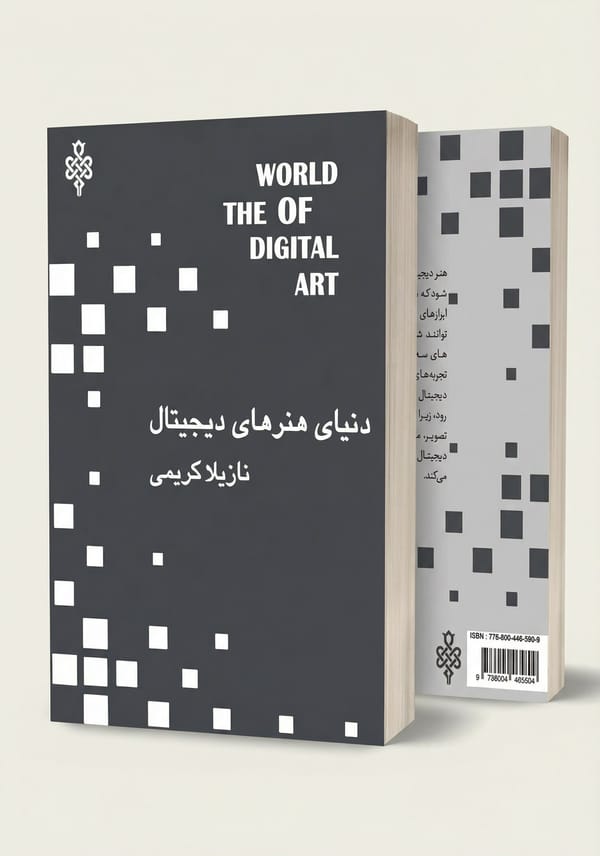DigitalStudio.13 Talks About Exploration of Glitch; Language of Pixel
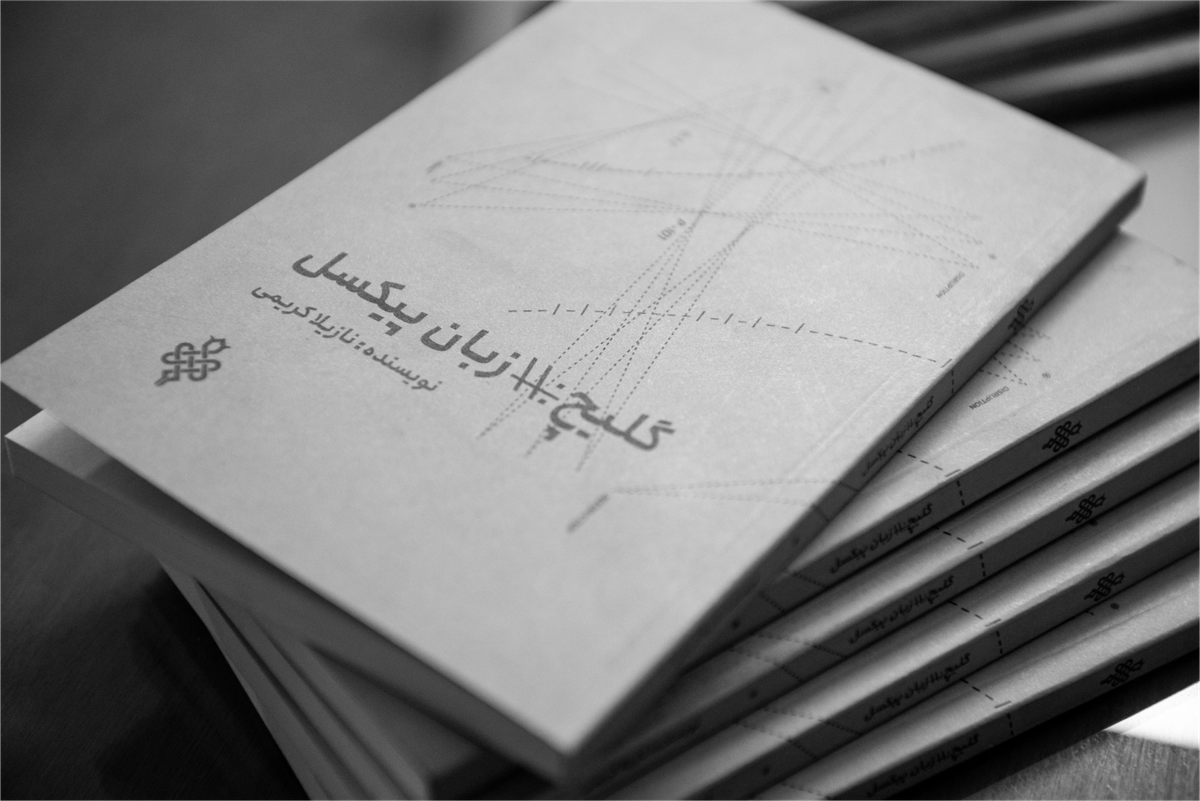
The Book Launch Ceremony for “Glitch; The Language of Pixels”
This book, authored by Nazila Karimi, delves into the fascinating world of glitch art—a contemporary art form born from digital and electronic disruptions. It explores the history, aesthetics, and techniques of glitch art, examines its significance in the post-digital era, and highlights the works of Iranian glitch artists. Aimed at filling the gap in Persian-language resources on the subject, this groundbreaking book serves as both an academic foundation and a creative inspiration for enthusiasts of digital art.
Introduction to Glitch Art
• Personal Encounter with Glitch Art
Glitch first emerged in my life in 2019 (1398 in the Iranian calendar) during my master’s thesis research on multimedia art. It introduced me to a new and largely unexplored genre in Iran: glitch art.
• The Gap in Persian-Language Resources
Despite its global theorization two decades earlier, glitch art lacked representation in Persian-language books and resources, emphasizing the need for focused development in this field.
The Importance of Glitch Art in Digital Spaces
• Potential for Dissemination and Communication
Glitch art’s capacity to thrive in digital environments and communicate concepts via web platforms makes it a significant art form in the evolving landscape of digital creativity.
• Growing Popularity Among Iranian Artists
Many Iranian artists actively engage with glitch art, which has been embraced enthusiastically by the younger generation of artists in the country.
Pioneering Efforts in Iran
• The 101 Platform and the First Exhibition
The first glitch art group exhibition, organized by the 101 Platform in December 2018 (Azar 1397), spotlighted emerging Iranian artists and their works, establishing a foundation for academic research.
• Academic Contribution
This initiative ultimately led to my authorship of Iran’s first thesis on glitch art, marking a milestone in the field.
Bridging the Resource Gap
• The Need for Persian-Language Resources
The absence of academic and non-academic writings highlighted the necessity for translations, original content, and research on glitch art.
• Creating a Comprehensive Guide
My book addresses this gap by offering detailed insights into glitch art, its history, techniques, and aesthetics, with a focus on Iranian artists.
What is Glitch Art?
• Definition and Origins
Glitch art is a contemporary art form rooted in structural disruptions in images and sound, emerging from disturbances in digital and electronic data.
• The Aesthetic of Malfunctions
Glitch art transforms digital flaws—chaotic lines, pixelated visuals, and static noise—into captivating visual pieces.
Exploring Glitch Art in Depth
• Content Overview of the Book
This book explores the concept and definition of glitch art, its historical context, types of glitches, visual characteristics, glitch design techniques, and its post-digital era aesthetics.
• Inspirational Reference: Rosa Menkman
The work of Rosa Menkman, a Dutch theorist and artist renowned for her contributions to glitch art, serves as a key reference point.
From Defect to Art
• Redefining Digital Interruptions
What might initially seem redundant or anti-aesthetic, like pixel breakage or desynchronized audio, becomes the foundation for visual beauty through glitch art.
• The Artistic Perspective
Glitch art shines a new light on digital disruptions, turning technological flaws into creative expressions through intentional and accidental techniques.
Conclusion
• A Transformative Art Form
Glitch art offers a unique perspective on data and digital malfunctions, demonstrating the potential for beauty in what is often considered broken.
• Publication Details
This book, authored by Nazila Karimi and published by Jomhouri Publications, serves as a comprehensive guide to glitch art and its growing presence in Iran.

